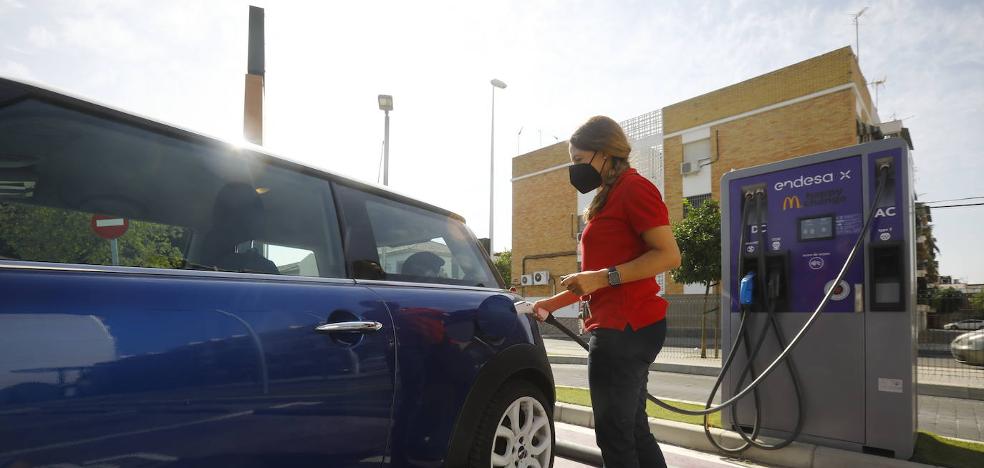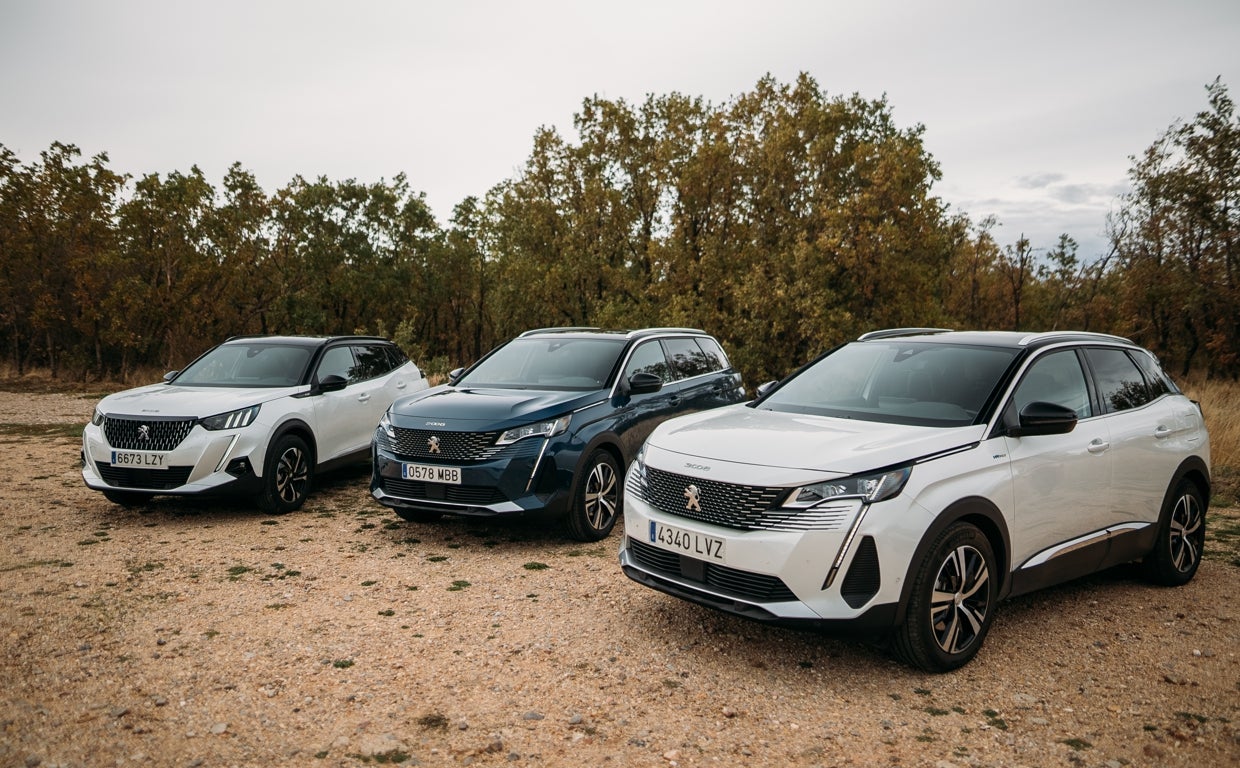While it may seem like a routine job, to ride safely, keep in mind that every bike has optimum pressure and every valve needs to be properly adjusted.
This Friday, June 3, and in full swing of alternative mobility systems for cars and vehicles for personal mobility, World Bicycle Day will be celebrated.
In 2020 alone, 24% more bicycles were sold in our country than the year before, according to the Association of Brands and Bicycles of Spain (AMBE). Taking into account the increasing use of the bicycle as a normal mode of transport, it is important on the one hand to know the traffic rules and correct tire maintenance, as inflating them is one of the most important factors when it comes to ensuring safe and smooth traffic.
Cycling enthusiasts, whether in the city, on the road or in a natural environment, will find basic tips on how to properly inflate their tires to ensure their safety and that of others when they get started in this guide from Bosch:
Find out what type of valve your bicycle tires have: you need a different pump for each type of wheel, depending on the type of valve.
The most common valves in almost every bicycle are three:
1. Presta: Also known as French valves. They are the narrowest and are designed to withstand high pressures and it is common to equip road or mountain bikes. Before starting to inflate the tire, open the valve head by gently turning it clockwise. When buying a new pipe we need to check the length of the valve; In recent years, more and more aero wheel designs have appeared on the market and Presta valves of various lengths can now be purchased to match them.
2. Schrader: Also known as car valves, these are commonly used for touring and commuter bikes. Their main advantage is that they are compatible with the same standard pump used to inflate car tires and can be serviced at any service station. In this case, all we need to do to inflate our tires is to insert the pump head into the valve.
3. Dunlop – Also known as Woods valves, these are generally used for commuter, touring and fitness bikes. Dunlop valves require the same opening as Schrader valves: 8.5 millimeters. The best part is that you can immediately start inflating the tire without opening the valve cap and only the cap is needed to let the air out of the tires.
Choose the right pump and adapters for your valve type:
Most old inflators only serve to inflate one type of valve and are outdated. For this reason, it is advisable to choose a modern air pump, since practically all of them are compatible with the 3 most common types of valves, as they are equipped with different adapters. The Bosch EasyPump cordless compressed air pump is a practical and user-friendly alternative to hand pumps. In addition to excellent portability, it can be inflated at any pressure up to 10.3 bar/150 PSI. The set contains the two adapters for the three types of bicycle valves, as well as a ball attachment and a special adapter for large volume mats, floats and beach balls.
Always make sure your tires have the correct pressure:
First of all, it is essential to circulate safely. It also extends the life of the tires and helps reduce their wear. In general, high pressure is recommended on flat terrain and smooth asphalt. The more uneven the road surface, the lower the tire pressure should be.
You should check your tire pressure regularly and top it up if necessary. As a guideline, a bicycle tire loses about 1 bar of pressure per month on average. Keep in mind that the higher the pressure, the faster it drops and therefore the tires of a road bike should be checked more often than those of, say, a mountain bike.
Checking the tire pressure with your hands is not the most reliable or accurate method. Ideally, measure the exact pressure and inflate them accordingly. Some pumps have a pressure gauge to help us with this task.
Well, cycling fans, whatever their type, are ready to continue enjoying their routes in the safest conditions and with the greatest comfort.
Rules for cycling:
In addition to these measures, the DGT reminds us of these fundamental rules when we go cycling.
1. Mobile Phone No: It is absolutely forbidden to use a mobile phone while cycling. Headphones connected to receivers or audio players are also prohibited. Headphones limit hearing and can be distracting. The fine is 200 euros.
2. Pay attention to braking: The cyclist can notice sudden braking by moving the arm up and down alternately, with short, quick movements. This is an advisable signal to avoid overtaking, in no case mandatory, as it is required to release the steering wheel in a very quick reaction.
3. On the bike path: For safety, in the city and on the road, it is always recommended – not mandatory – to ride on the bike paths when they are available.
4. No alcohol: Yes, the maximum blood alcohol level for motorists in general (0.5 g/l alcohol in the blood or alcohol in the breath higher than 0.25 milligrams per litre) also affects cyclists. They are also required, like other drivers, to undergo a breath analysis if required by an officer. Positive breath analysis is between 500 and 1,000 euros (depending on the rate and recidivism).
5. A passenger up to 7 years old: Bicycles may only carry a passenger up to 7 years old in an approved extra seat, provided the rider is of legal age. Carrying a child incorrectly carries a fine of 100 euros.
6. Turn on your lights: When riding at night, in underpasses or through tunnels, cyclists should have their lights in front and back to see and be visible; If not, you will be fined 200 euros.
7. Right of way for pedestrians: Cyclists must also give way at a well-marked crosswalk and when turning to get onto another road and there are pedestrians crossing it even if there is no crosswalk. Not respecting the priority of pedestrian crossing is 200 euros.
8. Right of way: Cyclists have right of way over motor vehicles when riding on a cycle path, on a cycle path or on a properly marked emergency lane. In all other situations, they must respect the priorities of other users as established by the rules and signals; If not, that also means a fine of 200 euros.
9. In a group: When riding in a group, cyclists have right of way – all, from the first to the last – at roundabouts, but also at other intersections, when the first cyclist has already arrived. Likewise, cyclists are allowed to ride in rows of two on the road, pulling as close to the right of the road as possible. On the other hand, in areas with no view (such as bends) and when they form crowds, they will not be able to circulate in parallel and will have to be lined up. Driving in groups on the road without an order is 100 euros.
10. Start of the ride: Before starting the ride, all cyclists – like the rest of the drivers – should look at the road they are going to take, check that there are no other vehicles nearby or that they are that far away that they can not there is no danger to start the march and signal the maneuver. Dangerous entry costs 200 euros.
11. Respect the signals: Traffic light signals, such as vertical ones (stopping, giving way, limited speed…), are for all drivers, including cyclists. Skipping a traffic light carries a fine of between 150 and 500 euros.
12. Signaling maneuvers: In addition to merging traffic, it is also mandatory to signal other maneuvers on the bicycle, such as bends, changes of direction and lane. Signals can be made either with the right arm, extended horizontally at shoulder height, or with the left arm, bent at an angle. Failure to signal a maneuver costs 200 euros.
13. Helmet: The safety helmet is only mandatory for persons under the age of 16. For other cyclists it is only recommended and always recommended. And on the road, an approved safety helmet is mandatory for all cyclists, with three exceptions: on long climbs, for medical reasons or in extreme heat. It is essential to put it on correctly and to always wear it fastened so that it cannot be thrown away. Driving without a helmet if it is mandatory will cost you 200 euros
14. Pedestrian crossings, walking: Contrary to popular belief, bicycles do not have priority on zebra crossings (not to be confused with bicycle crossings). To cross a zebra crossing, it is mandatory to get off the bike and cross on foot; otherwise you have to pay 200 euros.
15. Not on the sidewalk: It is forbidden to cycle on sidewalks and pedestrian areas, unless it is marked as a bicycle path for shared use with pedestrians, punishable by 100 euros.
16. Right: In the city, bicycles should ride as close to the right of the road as possible, with a safety distance from the curb or with parked vehicles. And if they go in a group, they can circulate at most in a column of two. Circulate in the city in groups without order, 100 euros.
17. Reflective: When it is mandatory to turn on the lights, they must also wear a reflective garment so that other drivers can distinguish them from 150 meters. Circular without reflectors 80 euros.
18. On the hard shoulder: On the road, cyclists should use the hard shoulder to their right, if any, to circulate. They will only be able to exit it on prolonged descents in safe conditions. Occupying the road while it is possible to drive on the hard shoulder is subject to a fine of 200 euros.
Source: La Verdad
I am Ida Scott, a journalist and content author with a passion for uncovering the truth. I have been writing professionally for Today Times Live since 2020 and specialize in political news. My career began when I was just 17; I had already developed a knack for research and an eye for detail which made me stand out from my peers.



